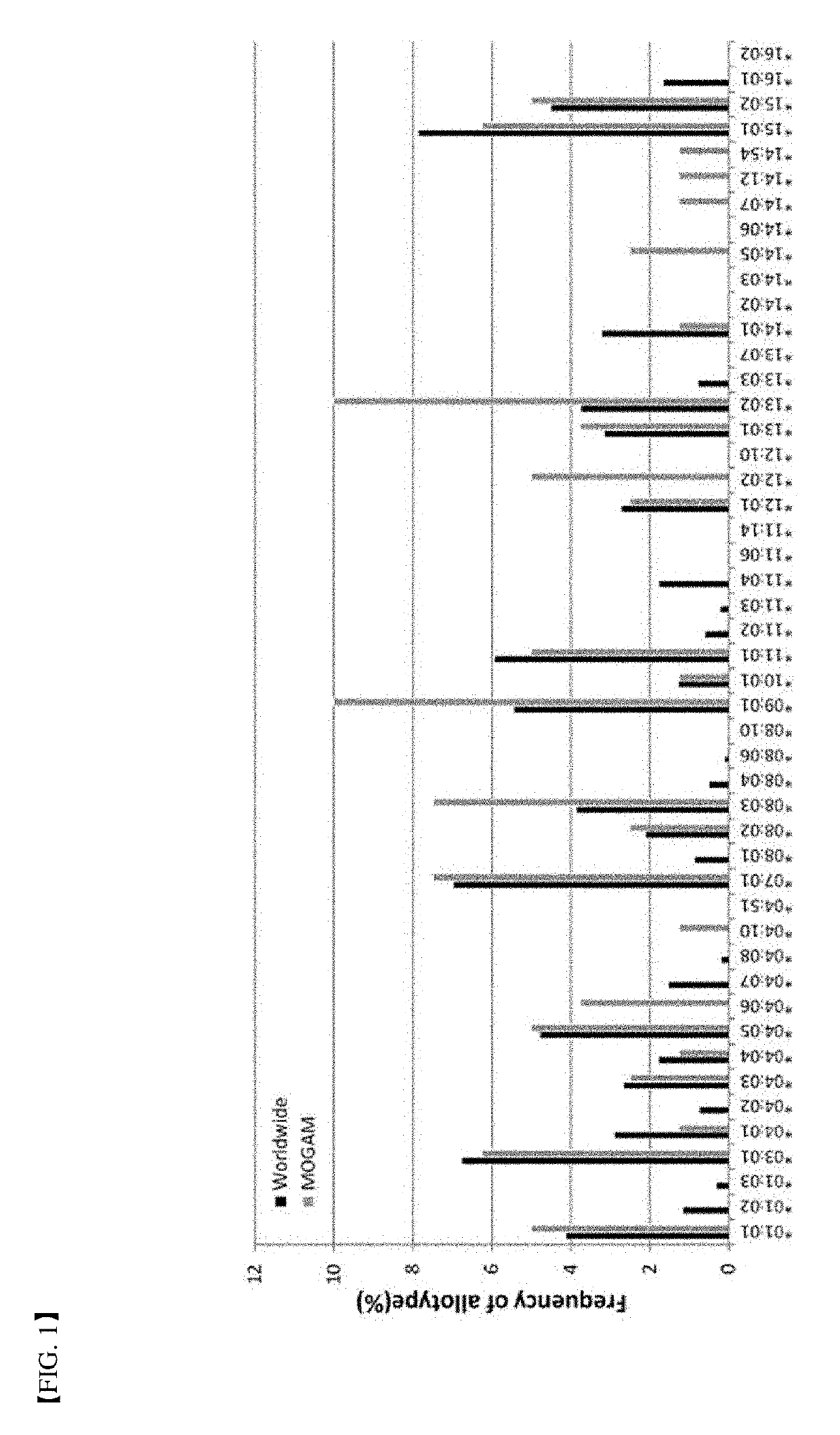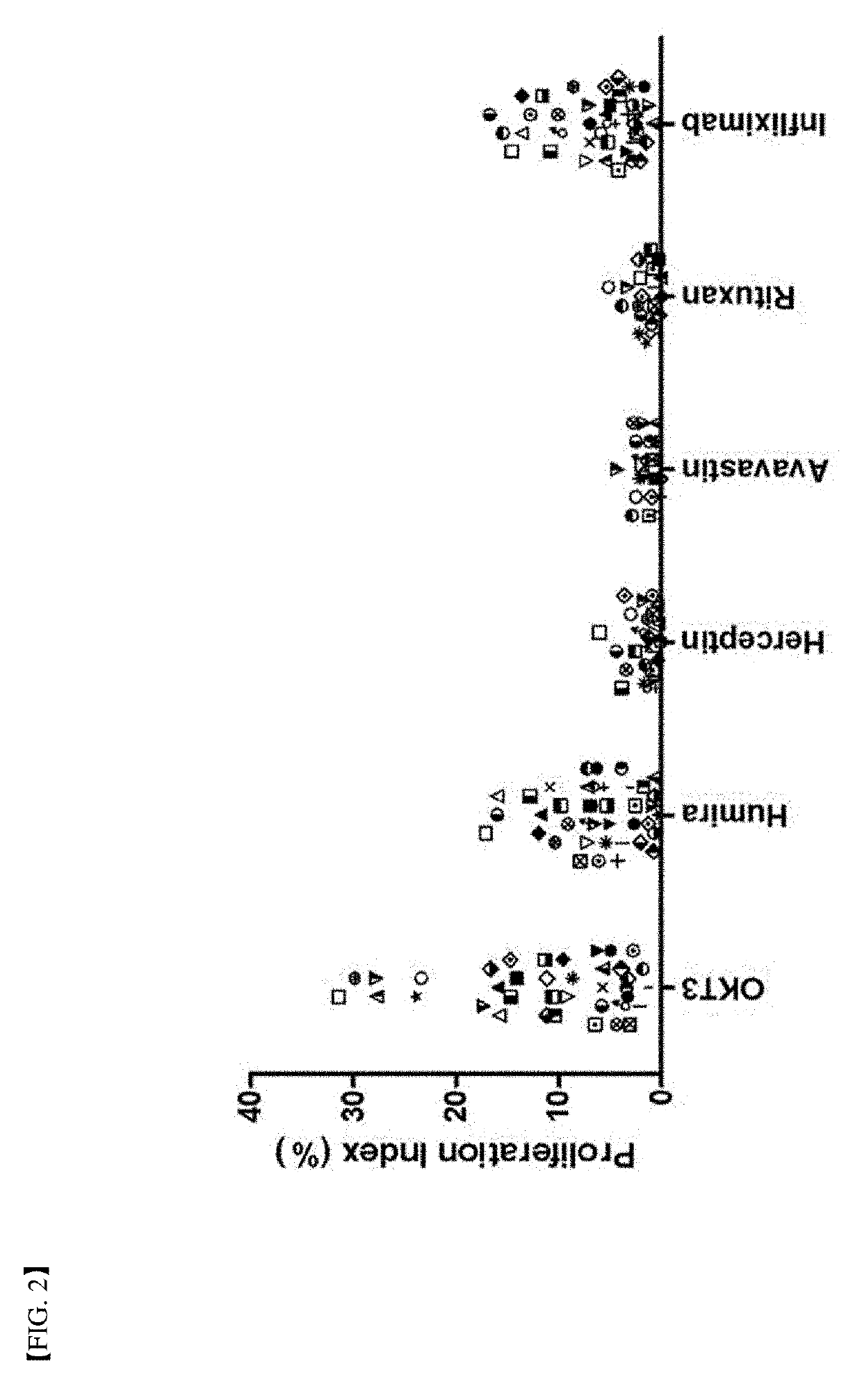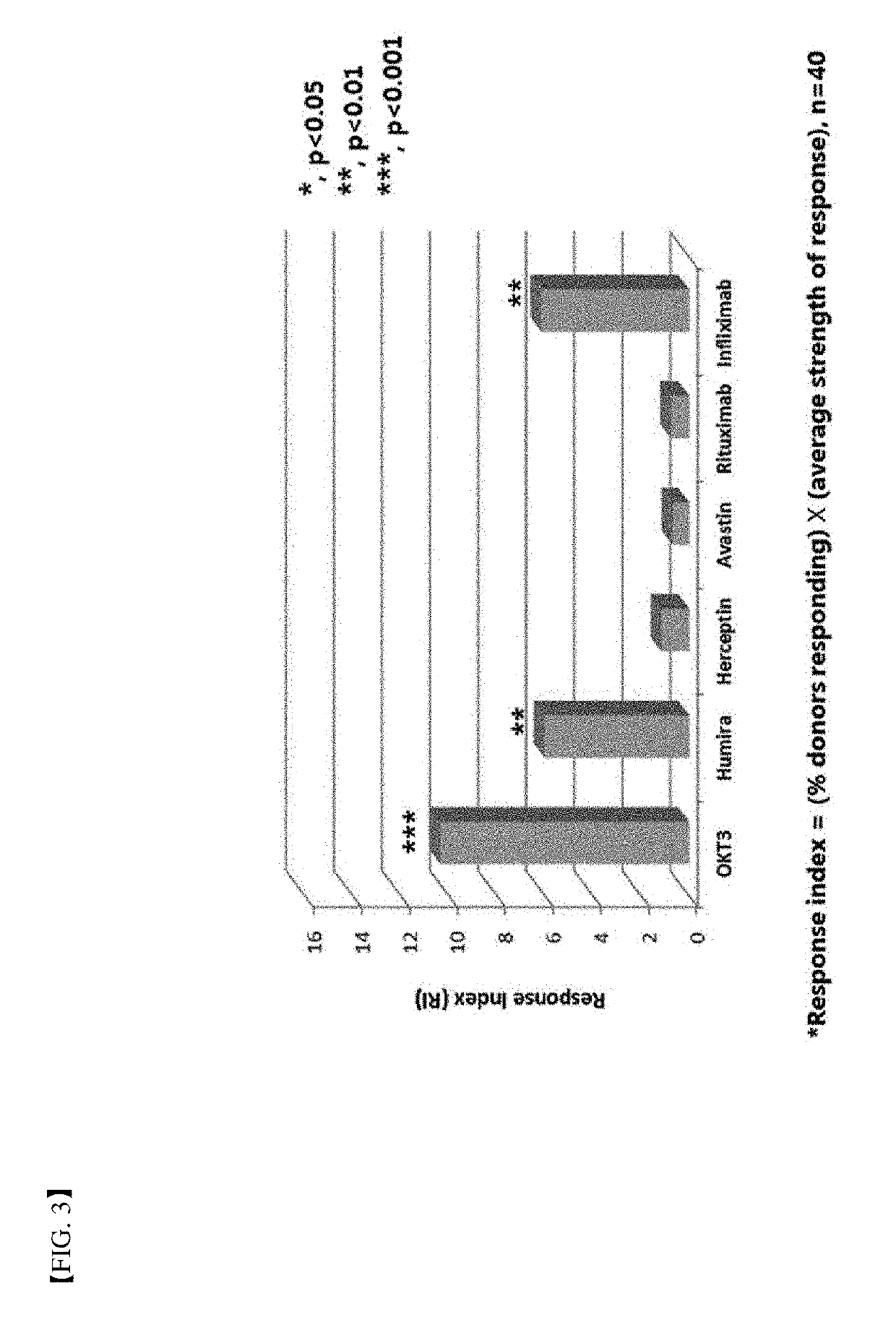Method for measuring immunogenicity of protein agent
- Summary
- Abstract
- Description
- Claims
- Application Information
AI Technical Summary
Benefits of technology
Problems solved by technology
Method used
Image
Examples
example 1-2
[0060]1. Procedures for Preparation of Dendritic Cells
[0061]1.1. PBMC Thawing
[0062]After quickly unfreezing cryopreserved PBC in a water bath at 37° C., the solution was moved to a 50 mL conical tube. While whirling the tube, a thawing medium (RPMI supplemented with 10% (vol / vol) FBS) was added dropwise and mixed well (15 mL / vial). After centrifugation at 1200 rpm for 10 minutes, a supernatant was discarded and the product was suspended in 30 mL of MACS buffer (PBS supplemented with 0.5% (vol / vol) FBS and 2 mM EDTA). After measuring the number of cells to determine cell viability, a supernatant was discarded by centrifugation at 1200 rpm for 10 minutes.
[0063]1.2. Monocyte Isolation
[0064]CD14 microbeads (Miltenyi Biotech) were added to the thawed PBMC and stained in ice for 15 minutes. After adding 30 mL of MACS buffer to the above product and centrifuging the same at 1350 rpm for 8 minutes, a supernatant was discarded. After suspending the product in 500 μL MACS buffe...
example 2
Verification of Immunogenicity Determining Method
[0084]In order to verify the method for determination of immunogenicity according to the present invention, this method was compared to a world population distribution with reference to HLA-DRB1 allotype. Following this, PBMC in 40 or more different donors corresponding to about 80% coverage thereof was used as a target (FIG. 1). Six (6) types of protein agents (Table 2) with ADA generation extent identified in a clinical phase were assayed by the method for determination of immunogenicity according to the present invention. FDA-approved antibody therapeutic agents with immunogenicity reported in the art were summarized in Table 2 below. Further, assay results of immunogenicity according to the present invention were briefly illustrated in FIGS. 2 and 3.
TABLE 2AntibodyReportednameCompanyTypeTargetIndication(s)immunogenicity*MuromanabOrtho BiotechMurineCD3Allograft rejection47%(50)(OKT3)AdalimumabAbbottHumanTNFαRA / Crohn / PsA / JIA / 2.6%-26...
PUM
 Login to View More
Login to View More Abstract
Description
Claims
Application Information
 Login to View More
Login to View More - R&D
- Intellectual Property
- Life Sciences
- Materials
- Tech Scout
- Unparalleled Data Quality
- Higher Quality Content
- 60% Fewer Hallucinations
Browse by: Latest US Patents, China's latest patents, Technical Efficacy Thesaurus, Application Domain, Technology Topic, Popular Technical Reports.
© 2025 PatSnap. All rights reserved.Legal|Privacy policy|Modern Slavery Act Transparency Statement|Sitemap|About US| Contact US: help@patsnap.com



